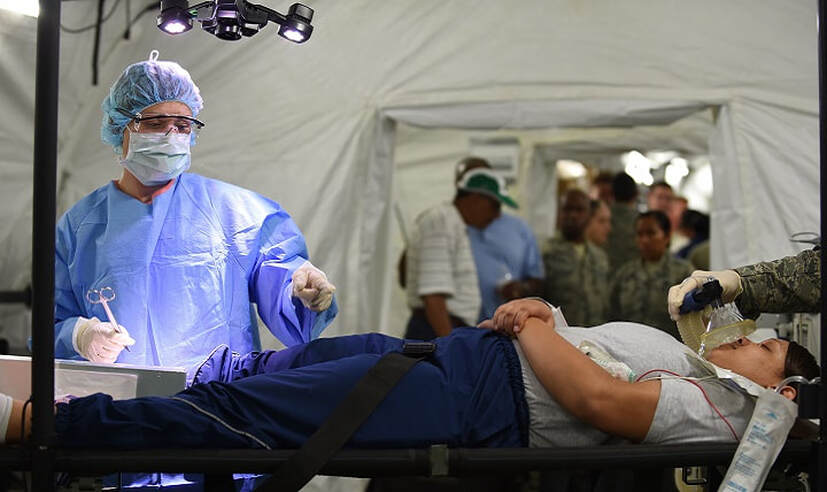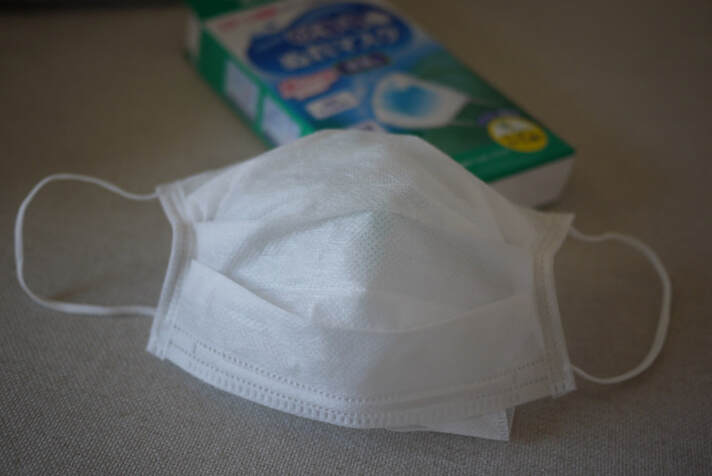Fending off the Flu: N95 vs Surgical Masks
Surgical masks, the iconic pastel-colored facewear ubiquitous in healthcare settings, are often employed as a first-line barrier against respiratory droplets carrying illnesses such as the flu. While these are often the form of medical facewear seen in news and film alike, another type of mask is starting to gain attention. Round and fitted closely to the face, the N95 respirator mask provides better air filtration than looser-fitting surgical masks. In general, these masks serve different purposes. Surgical masks prevent particles from being transmitted from the wearer to those around them, while also acting as a physical protective barrier against larger particles and other contaminants such as blood. N95 masks, on the other hand, can offer more effective protection against much smaller particles (95%, in fact, when professionally fitted), since they are fitted to each wearer’s face and possess a more selective filter. During flu season, a common debate in hospitals revolves around whether the more expensive and uncomfortable N95 masks should be used in place of surgical masks. Now, with the ongoing COVID-19 coronavirus pandemic, a major concern in the minds of both healthcare professionals and the general public, there is a greater urgency to come to a conclusion regarding this debate.
A recent study conducted by the University of Texas’s Southwestern Medical Center, the Center for Disease Control and Prevention (CDC), and several other US research groups sheds new light on this topic. Healthcare workers from each participating site were subjects for this study. Since different hospitals and healthcare settings, such as emergency rooms and outpatient clinics, have various levels of potential exposure to the flu, the study was designed to be a randomized cluster study. This meant that each participating hospital was paired based on characteristics of the patient population, types of health services, and number of healthcare professionals. Within those pairs of sites, one group was randomly assigned to use surgical masks, while another was assigned N95 masks. Pairing up the sites allowed researchers to look at mask effectiveness more directly, without external factors that could possibly influence the results. The effectiveness of both were then studied in two ways. First, each participant maintained a journal and received a flu-detecting throat swab if they felt ill. Second, each participant's levels of influenza hemagglutinin, a flu virus protein found on the flu virus, were compared using blood tests taken both before and after the flu season.
A recent study conducted by the University of Texas’s Southwestern Medical Center, the Center for Disease Control and Prevention (CDC), and several other US research groups sheds new light on this topic. Healthcare workers from each participating site were subjects for this study. Since different hospitals and healthcare settings, such as emergency rooms and outpatient clinics, have various levels of potential exposure to the flu, the study was designed to be a randomized cluster study. This meant that each participating hospital was paired based on characteristics of the patient population, types of health services, and number of healthcare professionals. Within those pairs of sites, one group was randomly assigned to use surgical masks, while another was assigned N95 masks. Pairing up the sites allowed researchers to look at mask effectiveness more directly, without external factors that could possibly influence the results. The effectiveness of both were then studied in two ways. First, each participant maintained a journal and received a flu-detecting throat swab if they felt ill. Second, each participant's levels of influenza hemagglutinin, a flu virus protein found on the flu virus, were compared using blood tests taken both before and after the flu season.
After analyzing thousands of participants at several sites for four years, researchers concluded that there was no significant difference between the effectiveness of surgical and N95 masks when worn correctly and as needed. This is an important conclusion in the face of the current COVID-19 outbreak, in which both types of masks are suffering shortages that put the lives of medical professionals, who are on the frontlines of this pandemic, at risk. Given the typical price difference between the two types of masks — the surgical mask costs 14 cents and the N95 costs 80 cents — as well as the increases in price in response to demand, hospitals could purchase more surgical masks than N95 masks for the same amount of money, allowing greater protection of more medical personnel. In the current shortage, it is important for the public to take precautions, while reserving masks, both surgical and N95, for frontline healthcare workers.
Featured Image Source: Staff Sgt. Natasha Stannard
RELATED ARTICLES
|
Vertical Divider
|
Vertical Divider
|
Vertical Divider
|






